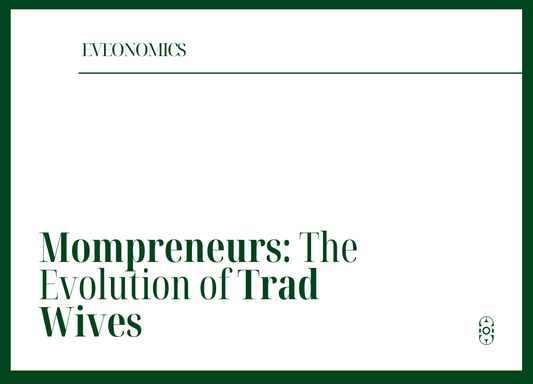The 1870s marked a critical turning point in the history of women’s rights, particularly in the realm of property ownership. Before this time, a married woman’s relationship with her assets was defined by the restrictive legal principle of coverture, which meant that once a woman married, her property was legally transferred to her husband’s control. The Married Women’s Property Acts, which began to be passed in the 1870s, were groundbreaking. They allowed women to own and control property in their own name, a shift that would have profound and lasting effects on society and on women’s autonomy.
Historical Context: The Struggle for Women’s Rights
At the heart of the 1870s reforms was a society where women, particularly once married, were legally regarded as subordinate to their husbands. Under coverture, a married woman’s legal identity merged with that of her husband. This meant that she had little to no control over her personal property, could not make legal contracts, and had no legal standing to manage her wealth. Her earnings, property, and even children were considered her husband's.
In countries like Britain and the United States, social movements advocating for women’s rights were already underway. The women’s suffrage movement, in particular, was growing in strength. But, before women could vote or gain full political equality, one of the critical issues was the ability to own and control property. The passage of the Married Women’s Property Acts was an essential step in redressing this inequality.
The Key Provisions of the Married Women’s Property Acts
The Married Women’s Property Acts of the 1870s were a profound shift in legal terms. For the first time, they granted married women the right to own property in their own name and to manage it independently of their husbands. These laws varied across different countries, but they shared a common theme: they enabled women to legally hold and control assets. The provisions typically included the following:
- Property Ownership: A woman’s assets, whether inherited before marriage or acquired during it, would remain her own property. This gave women the legal right to own land, money, and other valuables independently of their husband.
- Financial Independence: Married women were granted the right to earn wages and retain income in their own name, without it automatically being considered their husband's property.
- Contractual Power: The ability to enter into contracts, buy and sell property, and manage financial transactions was now within the woman’s control, significantly shifting the legal landscape.
The first of these laws emerged in the UK in 1870, with the Married Women’s Property Act, though it was the 1882 Act that solidified the legal framework for married women to manage property. Similar laws followed in countries like the United States, Canada, and Australia, with each adapting the core principles of the act to suit its own legal traditions.
Impact on Women’s Lives: Empowerment and Economic Freedom
The legal ability to own and manage property was nothing short of transformative. For the first time, many married women were granted a degree of economic independence that had previously been denied them. Women now had the legal right to work for an income and manage their finances independently. They could engage in business, buy and sell land, and, importantly, inherit property without needing the consent of their husbands.
This change had far-reaching consequences. In wealthier families, it allowed women to manage family estates, sometimes providing them with more power and authority than they had previously held. For women in less affluent circumstances, it allowed them to take ownership of their own economic survival—whether through running a business, managing agricultural land, or contributing to the household in a more substantial way.
In effect, the acts created a situation where women could engage with the economic world on their own terms. Women in many areas—particularly rural communities—were able to take on roles that would have previously been denied to them, whether as landowners, businesswomen, or investors.
Challenges and Limitations of the Acts
While the Married Women’s Property Acts were undoubtedly progressive, they did not eliminate all obstacles. Women still faced significant challenges, particularly in their interactions with the law and within marriage. Despite the reform, many women continued to experience significant economic disadvantage compared to their husbands. In some jurisdictions, women could only access their property through their husband’s consent, and social attitudes towards women’s autonomy were slow to change.
Additionally, while married women could now own property, their legal standing was not always fully equal to that of men. Widows, for example, often faced difficulties asserting their property rights, and in divorce proceedings, women were still at risk of losing their assets. The reform of property law did not automatically translate into broader legal and social equality.
Furthermore, the ability to manage property did not, in itself, remove the cultural and societal expectations placed on women. The notion of the male head of the household remained deeply entrenched, and many women continued to face resistance in seeking greater independence.
Global Comparison: A Shifting Landscape for Women’s Rights
While the Married Women’s Property Acts were a significant breakthrough in the countries where they were introduced, the scope and impact varied. In Britain, the Married Women’s Property Acts of the late 19th century were essential in redefining the rights of women within marriage. The 1882 Act, for instance, ensured that women had full control over their property, but it wasn’t until the early 20th century that similar rights were granted to women in countries like the United States, where individual states passed their own versions of the law.
In Australia, the Married Women’s Property Act of 1890 followed a similar path, granting women greater financial autonomy. In Canada, meanwhile, the legal changes took longer to be fully realised, with some provinces offering more expansive rights than others.
These acts, though important, were not immediately followed by a complete overhaul of women’s rights across the board. Women’s political and economic rights continued to be a contested space, and it was not until the mid-20th century that significant steps were taken towards broader equality. However, the Married Women’s Property Acts were undeniably a significant part of the story, representing a shift in how women were viewed within the legal system.
Long-Term Significance: The Path Toward Gender Equality
The impact of the Married Women’s Property Acts cannot be overstated. By giving married women legal control over their property, the acts directly contributed to the ongoing fight for gender equality. They were foundational to the broader movement for women’s rights, setting the stage for further reforms in areas such as divorce, inheritance, and employment.
Moreover, the ability for women to own property marked a crucial step towards economic independence and autonomy. It allowed women to more fully participate in the public and economic spheres, challenging traditional gender roles. The reforms demonstrated that, even in a world where gender inequality was deeply entrenched, legal change was possible—and could drive significant shifts in societal expectations.
Contemporary Relevance: A Continuing Struggle
Though the Married Women’s Property Acts were groundbreaking, they were not a panacea for all of women’s legal and social challenges. Today, the fight for women’s economic and legal rights continues. Women still face a gender pay gap, difficulties in accessing property and inheritance rights, and legal discrimination in various parts of the world. However, the legal victories of the 1870s remain a testament to the power of progressive change.
We need only look at the progress women have made in the centuries since to see the far-reaching impact of the legal reforms introduced during the 1870s. Women today are more likely than ever to own property, start businesses, and exert control over their economic future. The legacy of these early laws continues to shape the ongoing struggle for equality, inspiring further efforts to dismantle the barriers that women continue to face.
Conclusion
The Married Women’s Property Acts of the 1870s were a game-changer in the movement for women’s rights. They marked a major shift in the legal and social position of women, granting them the right to own and control property. While these laws were not without their limitations, they set in motion a series of reforms that would continue to unfold throughout the 20th and 21st centuries. The empowerment these laws provided—giving women financial independence and the ability to engage with society as equals—was a necessary step toward achieving the broader goals of gender equality.
As we reflect on the achievements of the past, we must also recognise the work that remains to be done. The struggle for equality is ongoing, and the Married Women’s Property Acts of the 1870s offer both a reminder of how far we’ve come and an inspiration for the work that still lies ahead.
*This article is for general information purposes only and is not financial advice. We are not licensed financial advisors. Please consult a qualified professional before making any investment decisions to ensure they fit your specific financial situation.





